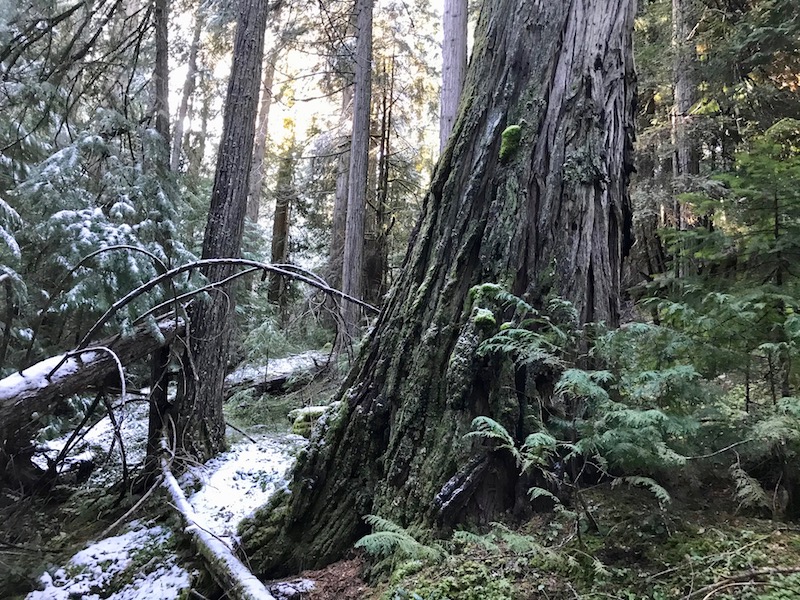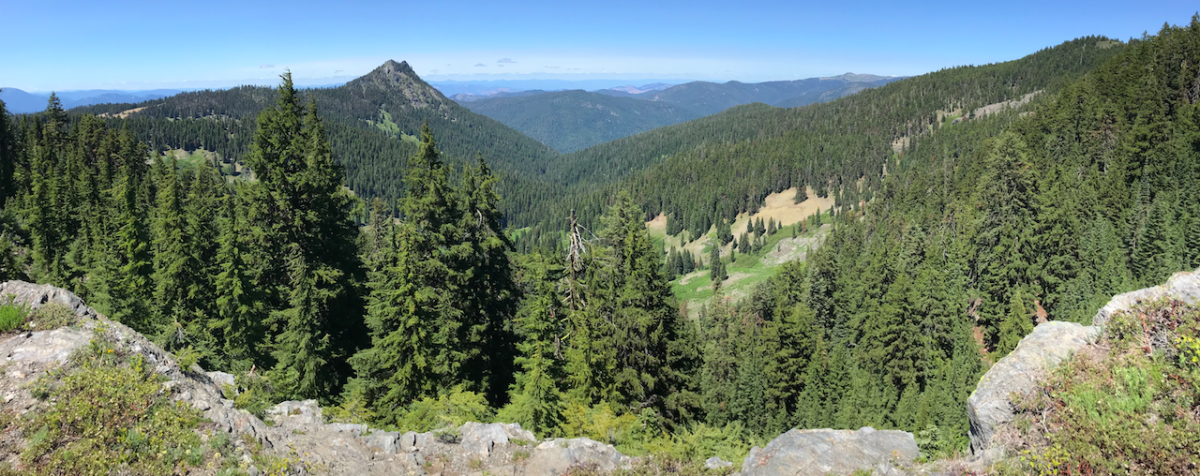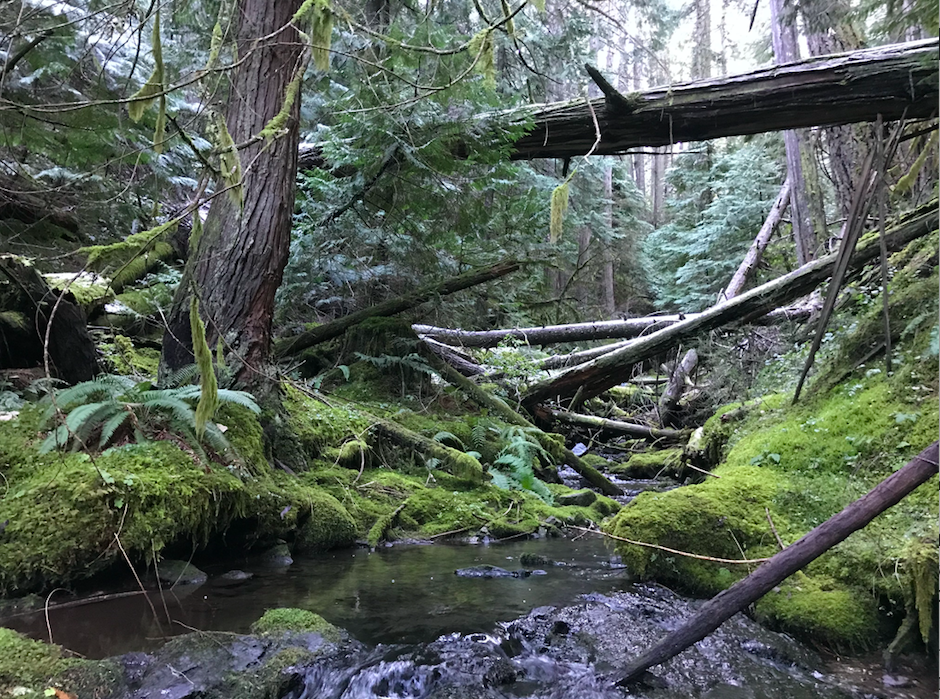
Beginning at beautiful Larkspur Spring high in the spectacular Kangaroo Inventoried Roadless Area, and running through the Pipe Fork Research Natural Area (RNA), the Pipe Fork is one of the last truly wild streams in the Williams Creek Watershed. The Pipe Fork tumbles down the northeastern flank of Grayback Mountain through spectacularly lush old-growth forests supporting the easternmost stands of Port Orford-cedar in Oregon. The Pipe Fork flows cold and clear out of the wildlands and into the East Fork Williams Creek where it contributes important cold water refugia for threatened coho salmon.
The old-growth forests along the Pipe Fork contain spectacular groves of Port Orford-cedar, incense cedar, Douglas fir, sugar pine, live oak, madrone, chinquapin and tanoak. These forests also provide important connectivity habitat between the high country of the Siskiyou Crest near Grayback Mountain and the foothills of the Applegate Valley around Williams, Oregon.
ANN recently nominated the Pipe Fork for protection as a Wild and Scenic River, and just this month, Senators Wyden and Merkley introduced the River Democracy Act, which proposes Wild and Scenic River designation for streams across the state and across the Applegate River watershed, including the federally owned portions of Pipe Fork.
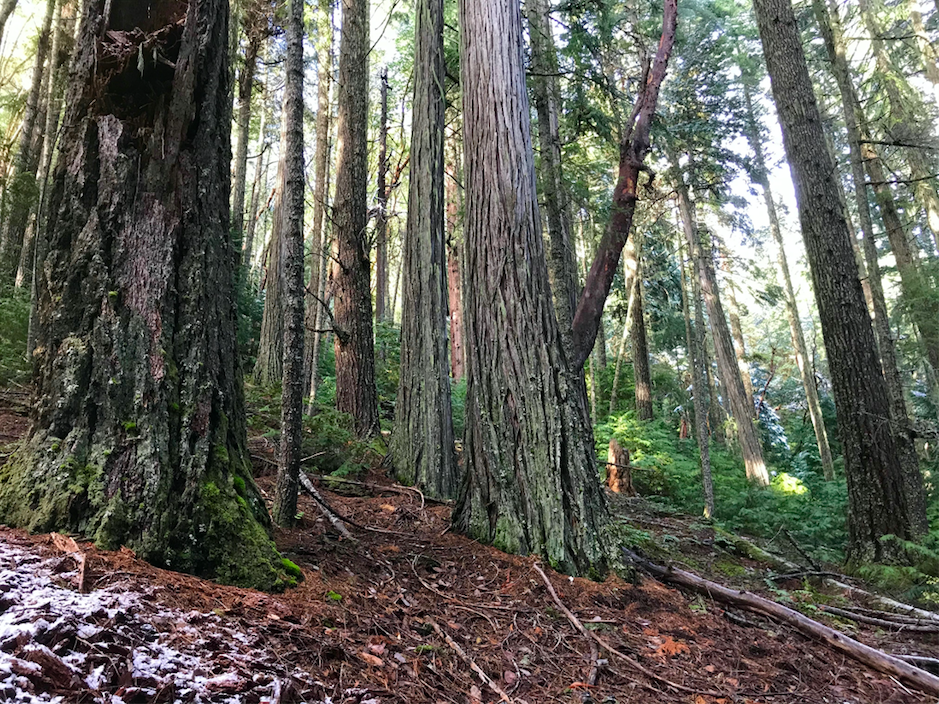
Yet, while support for the permanent protection of the Pipe Fork has been growing, a 320 acre parcel of “timberland,” owned by Josephine County and directly adjacent to the roadless wildlands and the Pipe Fork RNA, has been proposed for clearcut logging. The Josephine County Forestry Department has proposed to clearcut 114 acres of mature conifer forest, and under the Oregon Forest Practices Act, would likely not only log off this important forested habitat, but would also likely “treat” stump sprouting hardwoods like madrone, live oak, tanoak and chinquapin with herbicides after the logging is completed.
Clearcut logging, road reconstruction, landing construction and yarding activities will increase surface erosion rates in the watershed’s highly erosive decomposed granite soils. This will increase sedimentation rates, fill in small pools, create turbidity, compromise coho salmon and steelhead spawning gravels with siltation, and increase stream temperatures in the East Fork Williams Creek’s most important cold water tributary. The removal of forest cover will also impact the area’s important habitat connectivity and reduce habitat for forest dwelling species like the Northern spotted owl and Pacific fisher.
Thankfully the Williams Community Forest Project (WCFP) has been working to acquire the 320 acre Josephine County parcel for conservation purposes. WCFP is attempting to attract conservation buyers that can acquire and hold the parcel until federal funding through the Land and Water Conservation Fund can be used to incorporate the property into federal ownership and add the acreage to the existing RNA. At first Josephine County appeared interested in selling the parcel rather than logging off its forests; however, recently the county commissioners proposed selling the property at public auction to the timber industry. Again folks at the WCFP sprang into action and have secured a temporary reprieve.
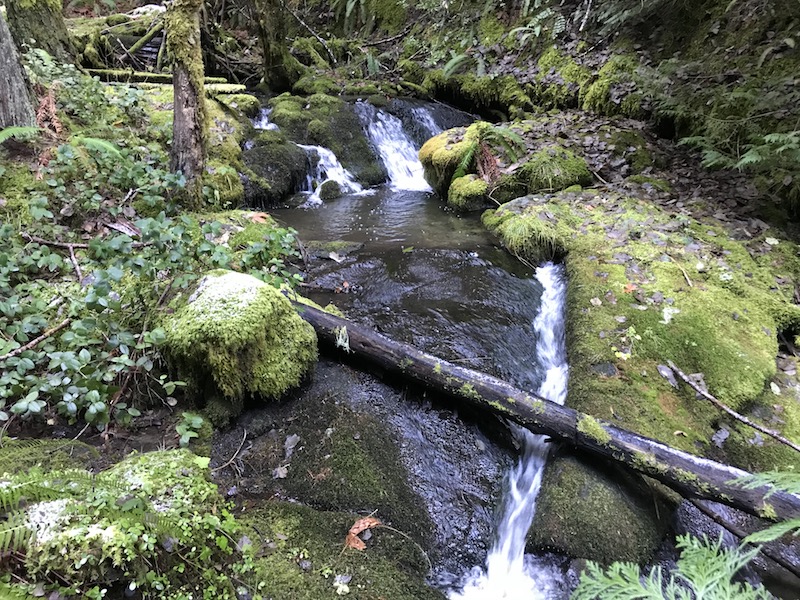
Currently, WCFP is working to secure funding or backing from large land trusts to acquire the property, but they also need to convince Josephine County to act on behalf of its citizens, not the timber industry. Please support their efforts by signing their petition and sending comments to the Josephine County Commissioners. Also please watch the new film sponsored by WCFP, “Pristine Waters.” This seven minute film will give you a glimpse of Pipe Fork’s beauty and will explain why it must be protected. ANN strongly supports the work of WCFP and the protection of Pipe Fork.
Sign the Pipe Fork Petition
Send a comment to the Josephine County Commissioners at: BCC@josephinecounty.gov
WATCH PRISTINE WATERS
LET’S KEEP PIPE FORK WILD!
